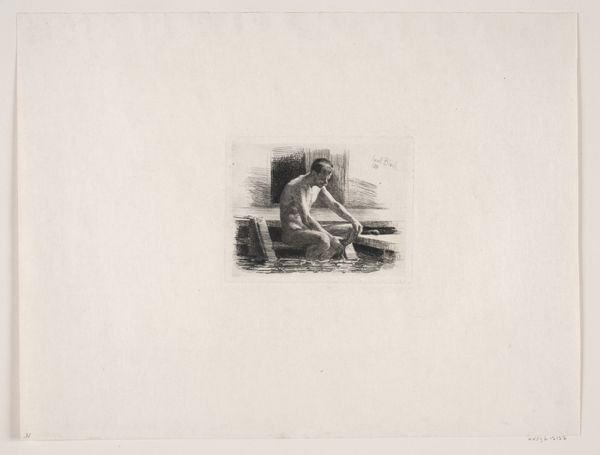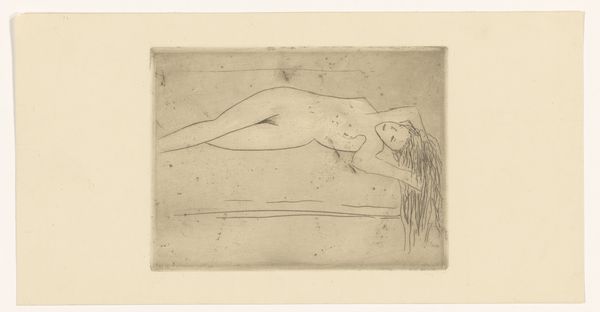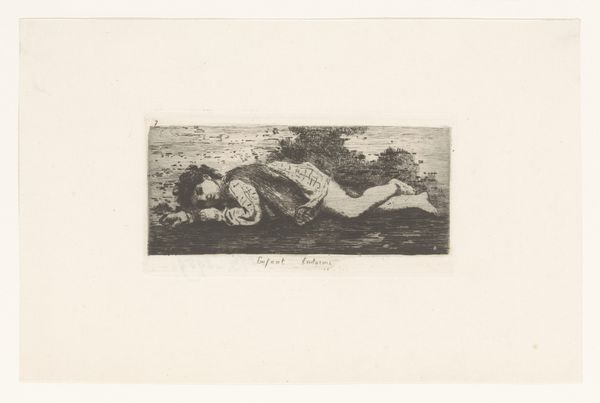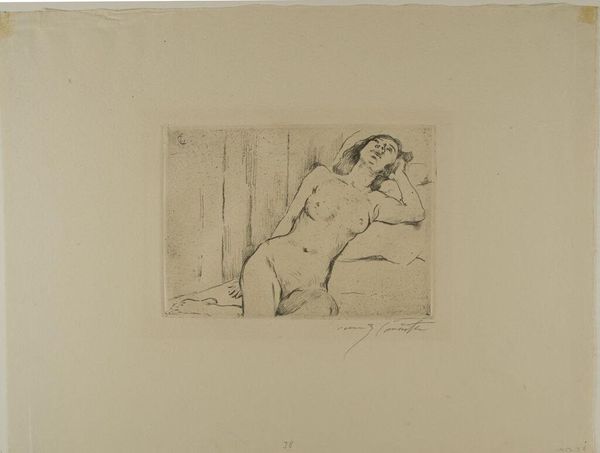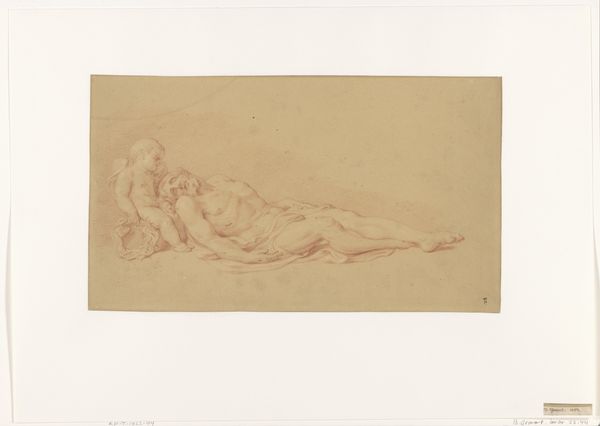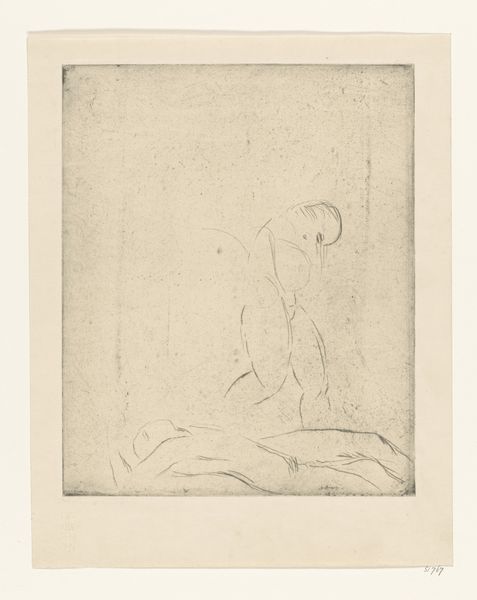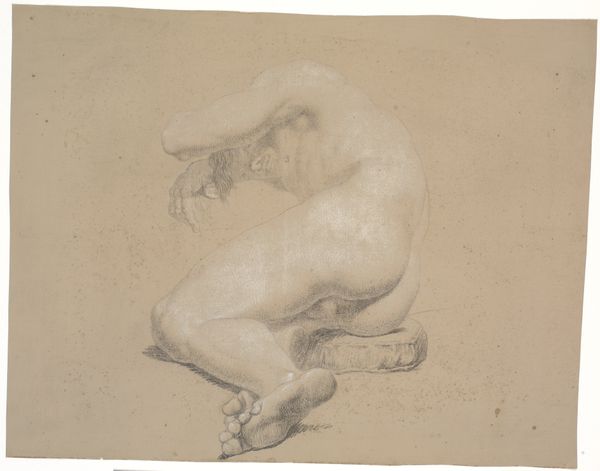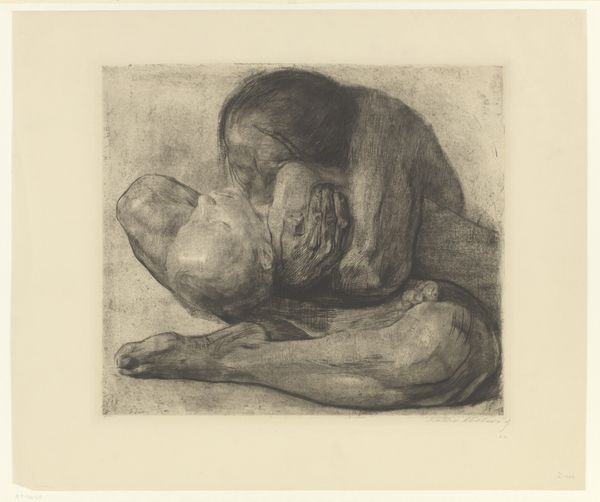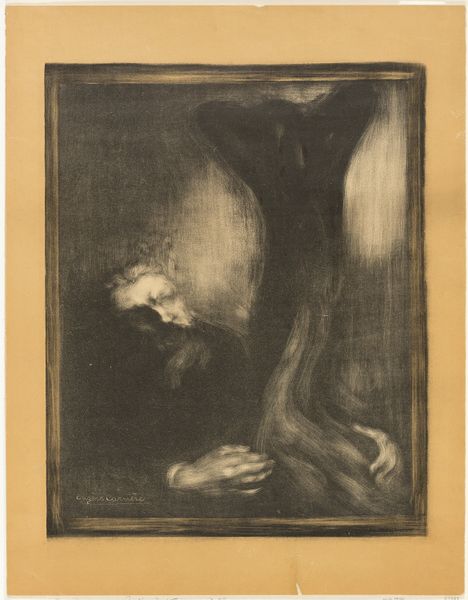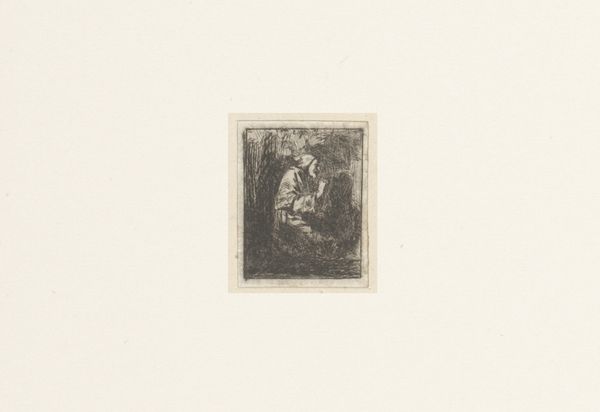
Dimensions: 319 × 272 mm (image); 368 × 311 mm (plate); 356 × 299 mm (primary support); 788 × 575 mm (secondary support, approx.)
Copyright: Public Domain
Curator: Here we have Max Klinger’s print, "Finis, from A Life," created in 1884, currently residing here at The Art Institute of Chicago. Editor: What strikes me immediately is this incredible tonal range he's achieved with etching and intaglio. It’s almost like a pencil drawing, but the richness goes way beyond graphite. Curator: Indeed. Klinger was fascinated with exploring the boundaries of printmaking. The Romantic and Symbolist movements were also key contexts here. Editor: You can see that romantic sensibility in the… well, is that a corpse floating on a raft? The stark black background enhances a disturbing scene, what commentary on materials informs our interpretation of its themes of mortality and transience? Curator: It’s more than that. Consider the title – "Finis." Klinger’s prints were always meant to engage social and political realities. Death here is less about physical ending, and more about a societal decay that lingers beneath the surface, something deeply melancholic and a fear of civilization's ending. Editor: I'd say that Klinger masterfully transforms paper into this ethereal and deeply disturbing visual statement. It’s far from passive, paper as the physical manifestation of these feelings he wanted to represent. What type of paper and ink did he use, do we know? Curator: Unfortunately, specifics on that are vague, and it's likely Klinger used various kinds in this etching series; yet his consistent engagement in public debates using these prints show that it's designed for broader dissemination and intervention in the cultural arena. Editor: Right. So he uses traditional intaglio for decidedly untraditional commentary! Looking closely, the means of production itself become the message. The layering and inking... that body almost seems to dissolve back into nothing. Curator: Exactly. The 'high art' etching technique employed to such macabre end serves to critique art's role and power in society and culture. Editor: A grim, unforgettable commentary on our materials, means and inevitable ending. Curator: The social context from which we draw our perspectives shapes everything, including that interpretation! Regardless, Klinger ensures a lingering resonance that transcends period categorization.
Comments
No comments
Be the first to comment and join the conversation on the ultimate creative platform.

